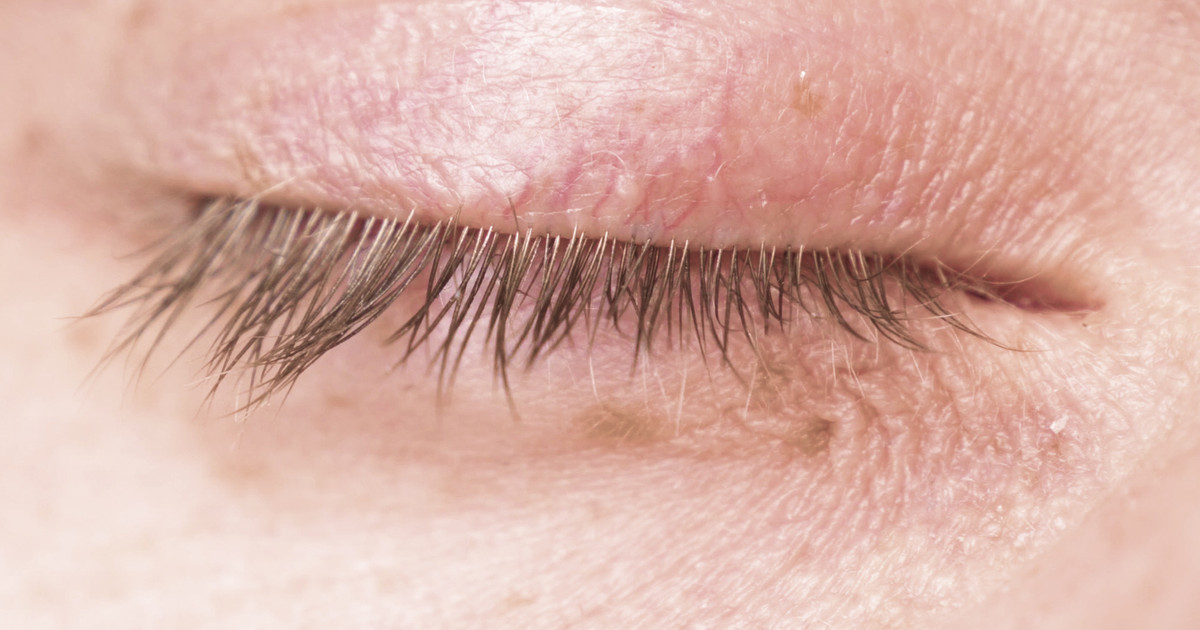Guide To The Symptoms Of Dystonia
Dystonia is a condition that causes patients to experience unintentional muscle contractions that eventually result in postural abnormalities. Dystonia can be caused by brain injuries, heavy metal poisoning, and oxygen deprivation, and acute dystonia is a potential side effect of some types of antidepressants, antipsychotics, and antiemetics. Some patients with dystonia only experience involuntary muscle contractions in one part of the body; this is known as focal dystonia. Patients who experience symptoms in two or more adjacent body parts have what is known as segmental dystonia, and individuals affected across widespread areas of the body have general dystonia.
To diagnose dystonia, doctors take a medical history and perform a physical examination. Blood and urine tests might be recommended to check for underlying medical conditions that could be contributing to the patient's symptoms, and MRI and CT scans are useful in detecting potential abnormalities in the brain. Electromyography studies may be necessary to check the electrical activity within the patient's muscles. Injections of onabotulinumtoxinA can be administered into specific muscles to reduce or potentially eliminate a patient's abnormal muscle contractions, and these injections are typically given every three months. Patients may also be given medicines such as carbidopa-levodopa, trihexyphenidyl, or tetrabenazine. In cases of severe dystonia, deep brain stimulation might be considered.
Contractions In A Certain Area

Patients with focal or segmental dystonia may notice they tend to experience contractions in a certain area of the body. The neck, eyelids, jaw, tongue, vocal cords, hands, and forearms are common areas for these types of contractions. Contractions of the neck muscles can cause patients to twist or turn their head to one side, and they may sometimes cause their head to lean forward or backward.
In cases of eyelid muscle contractions, patients could notice dry eyes, and might have episodes of rapid blinking. While these contractions don't normally cause pain, patients could notice vision difficulties during the contractions, and they could have episodes more often when they are in bright light. Contractions of the jaw and tongue muscles may cause pain, and patients have reported drooling, slurred speech, and swallowing difficulties. When vocal cord muscles contract, individuals may only be able to speak at a whispering volume. Muscle contractions in the hands and forearms could result in dropping objects and difficulties typing or handwriting.
Contractions Triggered By Specific Actions

Patients with task-specific focal dystonia may have contractions triggered by specific actions. For example, these individuals might observe muscle contractions while trying to write, and contractions could also occur while playing a musical instrument. Generally, patients who have contractions triggered by specific actions do not experience contractions at other times. Individuals who experience contractions while writing may have writer's dystonia (writer's cramp). This form of task-specific focal dystonia could cause the patient to grip a pen with excessive force, and they might also elevate their shoulders, retract their arm, or occasionally extend their fingers while holding a pen or while typing.
Individuals with musician's dystonia typically do not experience any pain with their symptoms. The highest incidence of musician's dystonia is seen in pianists, guitarists, and brass players. Patients are normally affected in one hand, and brass players may experience symptoms in the hands or embouchure. Their fingers may curl up, and their thumb could flex involuntarily. Some individuals might also notice a tremor. Neurotoxin injections and occupational therapy are often beneficial in cases of task-specific focal dystonia.
Exacerbated By Stress Or Fatigue

Individuals with all forms of dystonia might notice their symptoms are exacerbated by stress or fatigue. Fatigue is sometimes worsened by the muscle contractions themselves, and appropriate treatment to reduce contractions could also reduce the patient's fatigue. Doctors recommend that all patients learn and practice appropriate stress management techniques. Engaging in relaxing, enjoyable activities such as yoga, meditation, reading, or listening to music could reduce stress and anxiety, and patients might want to keep a symptom journal that includes any stressful episodes and symptoms experienced.
Joining a support group to connect with other patients could be helpful, and individuals with dystonia who are going through a particularly stressful period may want to seek support from a counselor. Patients should always let their healthcare team know if they experience any changes in their stress or fatigue.
Worsen Over Time

Symptoms of dystonia may stay the same for a long time, however, some patients have reported their symptoms worsen over time. Worsening of symptoms usually occurs with progressive dystonia, an inherited form of the condition. However, patients with other types of dystonia could also develop more severe symptoms over time. Currently, doctors use temporal patterns to predict which patients will experience symptom progression. Temporal patterns consider what time of day the patient's symptoms occur, how long they persist, and if they are related to a specific task.
Potential signs of symptom progression include more frequent episodes of symptoms related to specific tasks, an increase in pain, and additional impairments in movement. Patients with dystonia will have frequent follow-up appointments with their neurologist, and they should always mention any changes in their symptoms. It may be possible to try different treatments to reduce symptom severity and stop symptoms from progressing.
Speech Issues

Speech issues are especially common with the cranial (oromandibular) and laryngeal forms of dystonia. Patients with cranial dystonia may notice that their mouth opens involuntarily, and they might notice their bottom jaw shifts to one side or the back. The jaw could suddenly clench shut, and involuntary movements of the tongue and lip muscles may be present. These symptoms could make speech difficult, and involuntary tongue or lip movements might make words difficult to pronounce or to speak clearly.
Laryngeal dystonia patients could have a voice that sounds raspy, strangled, or breathy, and they may have to exert additional effort to speak. These individuals often report their speech improves if they are singing or whispering. Patients whose speech issues are caused by oromandibular dystonia could benefit from oral medications, speech and swallowing therapy, and the use of sensory tricks to temporarily block muscle spasms. Individuals with laryngeal dystonia usually respond well to neurotoxin injections, and a surgical procedure known as selective laryngeal adduction denervation and reinnervation may be considered.
Abnormal Gait

Generalized dystonia may produce an abnormal gait. In most cases, patients with this form of dystonia twist or bend their torso while walking. Instead of picking up their legs as they walk, some generalized dystonia patients could walk by dragging one of their legs as they move. Other patients with this condition could display a shuffling gait. In this gait, the affected individual walks with shortened steps and reduced arm swing.
The gait changes that develop as a result of dystonia may cause the patient to feel unsteady, and balance issues could occur. They might be at an increased risk of falling and may need to use mobility aids, including canes or walkers. Physical therapists can teach patients specific exercises that could make walking safer. Patients with dystonia should always report any gait changes to their doctor.
Twisting Of The Torso

Individuals with generalized dystonia often present with twisting of the torso. The twisted posture of the torso might occur only during muscle spasms. However, some patients develop abnormal postures of the torso that remain fixed. Patients with changes to the posture of their torso could also experience rapid, rhythmic jerks (myoclonic jerks). To properly evaluate generalized dystonia and posture, the patient may need to have a neurological examination, blood tests, and imaging studies. Twisting of the torso may be reduced through treatment with oral medications, and patients who undergo deep brain stimulation could experience a significant improvement in this symptom as well. Physical therapy and occupational therapy may be suggested in certain cases.
Posture Deformities

Posture deformities are typically seen with generalized dystonia, and they can also occur with cervical dystonia and task-specific dystonia. For example, patients with generalized dystonia may have a twisted posture due to muscle spasms and contractures in the limbs and torso, and one of the feet might be turned at an unusual angle. In cases of cervical dystonia, it is common for the head and neck to pull to one side. Patients with task-specific dystonia may exhibit posture deformities while performing certain tasks. Musicians with a form of task-specific dystonia called musician's cramp may notice their fingers stick or curl, and their knuckles might lock into a fixed position. To manage the posture abnormalities caused by dystonia, doctors may recommend a combination of oral medicines, injections, and physical therapy. Botulinum toxin injections can help minimize muscle spasms and posture changes in localized areas.
Levodopa, an oral medication, is often the first line of treatment for generalized dystonia and other types of dystonia that benefit from oral medication. If this medicine is ineffective, trihexyphenidyl and other anticholinergic medicines might be used to reduce tremors and spasms. Clonazepam, tetrabenazine, and baclofen could help relax the muscles as well. Patients might need to try a combination of several different medicines to manage their symptoms. Since the postural abnormalities caused by dystonia can sometimes be painful, patients might be prescribed pain relievers, and a consultation with a pain management specialist could be beneficial. Doctors may consider deep brain stimulation for patients with severe cases of generalized dystonia. If the treatment is successful, it can provide sustained relief from symptoms.
Trouble Swallowing

Oromandibular dystonia patients could have trouble swallowing, and this might make it difficult to eat and speak. It is common for patients with this form of dystonia to have trouble opening and closing the mouth. Some patients with this condition only have symptoms when they are trying to talk or eat. For others, symptoms could also occur at rest. Patients might experience more severe symptoms like worsening trouble swallowing during times of stress or fatigue.
To manage the swallowing difficulties caused by oromandibular dystonia, doctors may recommend botulinum toxin injections and speech therapy. The botulinum toxin injections are administered into specific muscles that control the movement of the mouth. Before the injections are given, doctors may perform an electromyography test to identify the specific muscles that need treatment. Speech and language therapists can teach patients mouth and swallowing exercises designed to reduce the risk of choking. When these exercises are performed regularly, they may help the patient eat and chew more easily.
Frequent Blinking

Frequent blinking is one of the most common symptoms of eye dystonia (blepharospasm). Patients with this condition might also experience twitching around the eyes that does not go away, and they may be sensitive to sunshine and bright lights. Their eyelids could feel heavy and tired. Some individuals could notice a feeling of dryness in the eyes that does not resolve with the standard treatments for dry eyes. The frequent, uncontrollable blinking associated with this form of dystonia generally worsens when the patient is stressed or tired.
To confirm a diagnosis of blepharospasm, the patient will normally need to be examined by an ophthalmologist who specializes in this condition, and a neurological examination might be necessary as well. If the diagnosis is confirmed, the patient will likely be offered botulinum toxin injections to weaken the muscles responsible for the uncontrollable blinking. Some individuals with this condition find it helpful to wear dark glasses, and facial acupressure may be useful.
